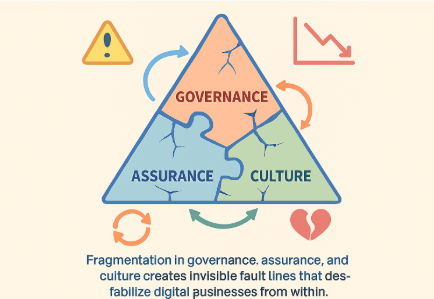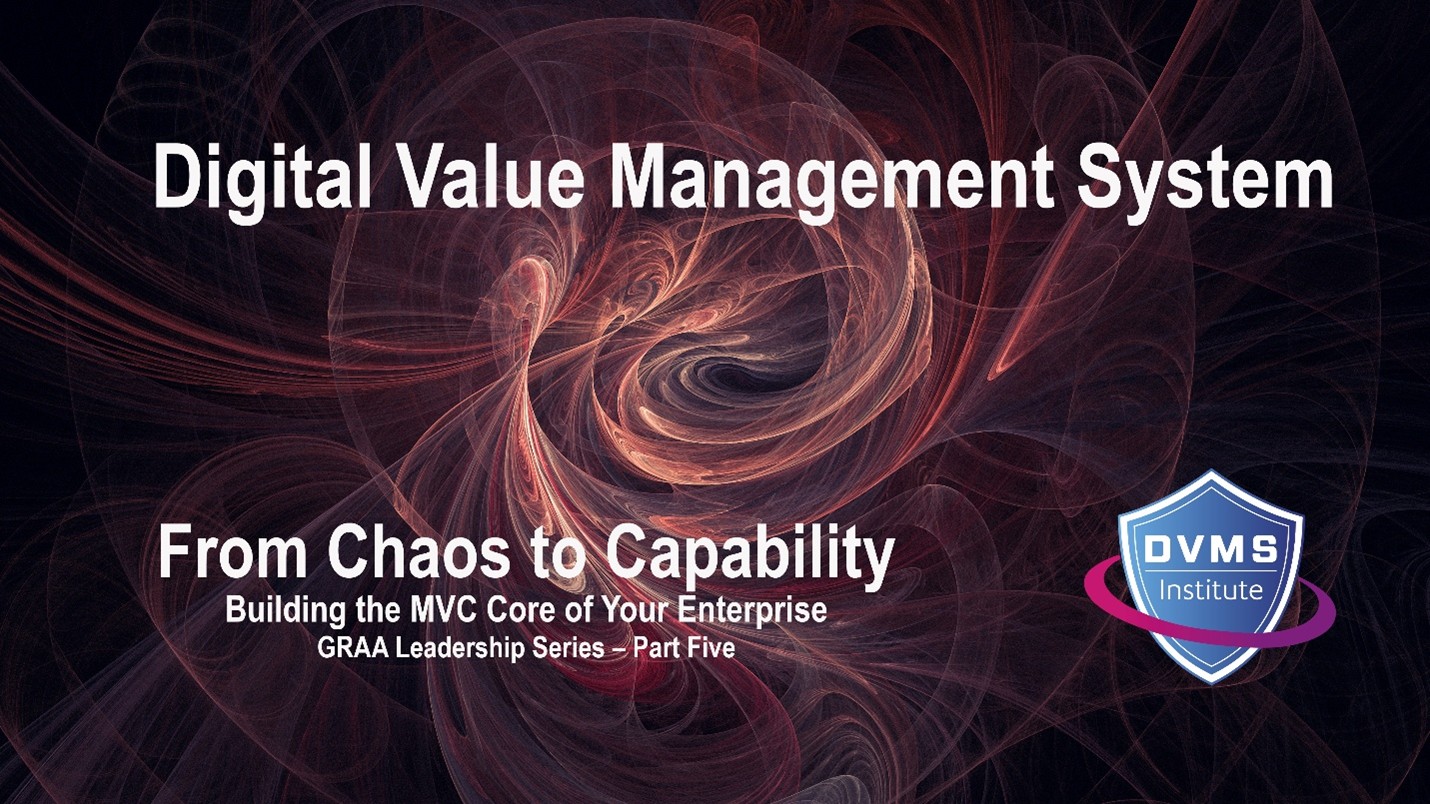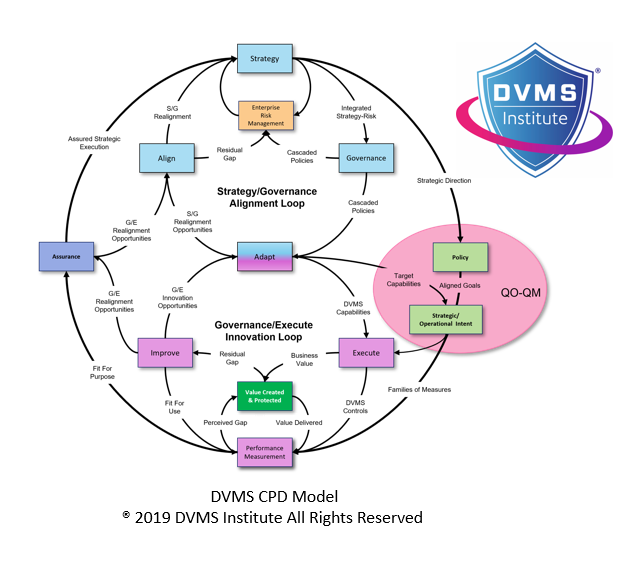The Hidden Threat: Why Fragmented Governance, Assurance, and Culture Are the #1 Risk to Digital Businesses
Rick Lemieux – Co-Founder and Chief Product Officer of the DVMS Institute
Introduction: A Silent but Existential Risk
In today’s hyper-connected and rapidly evolving digital economy, cyber threats, compliance demands, and customer expectations dominate business conversations. Yet, the most significant risk to a digital business is often not a malicious actor, a data breach, or even market disruption. It is fragmentation—the disjointed and siloed approach to governance, assurance, and culture. Fragmentation silently erodes the foundation of trust, agility, and resilience on which every digital business depends. While technology may be the engine, governance provides the steering, assurance supplies the brakes, and culture fuels the journey. If these elements operate in isolation rather than as an integrated system, the organization effectively drives itself into a storm.
Governance: The Strategic Nerve Center
Governance is the framework that sets direction, defines responsibilities, and ensures alignment between strategy and execution. In digital businesses, governance must address traditional corporate oversight and digital-era imperatives: data privacy, AI ethics, cybersecurity, and regulatory compliance.
Fragmented governance occurs when policies, controls, and accountability mechanisms are inconsistent across departments, geographies, or digital platforms. For example, marketing might adopt one customer data policy while IT enforces another, leading to regulatory exposure and operational inefficiency. Inconsistent decision-making processes slow innovation, cause duplication of effort, and undermine the company’s ability to respond cohesively to emerging risks.
In the absence of integrated governance, strategic priorities often conflict. Product teams may prioritize speed to market while compliance teams emphasize risk mitigation, with no unifying authority to reconcile differences. The result is organizational paralysis or worse, uncontrolled risk-taking.
Assurance: The Confidence Engine
Assurance—through audits, risk assessments, monitoring, and performance measurement—provides stakeholders with confidence that governance objectives are met and risks are controlled. In digital contexts, assurance must be continuous, dynamic, and data-driven to keep pace with rapid change.
Fragmented assurance manifests when audit, compliance, and risk management functions operate in silos, using different metrics, tools, and reporting structures. This creates blind spots. For example, a cybersecurity audit may highlight vulnerabilities that a business continuity review ignores, or a financial audit may miss technology-related risks entirely.
Organizations cannot generate a “single source of truth” about risk exposure without a unified assurance approach. This weakens executive decision-making and damages credibility with investors, regulators, and customers who expect transparency and accountability.
Culture: The Human Operating System
Culture—shared values, behaviors, and attitudes—drives how people within a digital business think, decide, and act. It determines whether governance and assurance frameworks are embraced or bypassed. In a cohesive culture, employees internalize the organization’s risk appetite, ethical commitments, and service standards, making compliance second nature rather than a box-ticking exercise.
Fragmented culture is marked by competing subcultures within the same organization. IT teams may prioritize technical security, product teams prioritize user convenience, and operations prioritize cost efficiency—each without understanding the trade-offs faced by the others. When leaders send mixed messages or tolerate pockets of resistance, the culture fractures further.
A fragmented culture weakens the enforcement of governance and assurance measures and can actively sabotage them. Employees may see controls as obstacles rather than enablers, leading to workarounds that expose the business to hidden risks.
The Interdependence of Governance, Assurance, and Culture
Governance without assurance is aspirational but unverified. Assurance without governance is tactical but directionless. Both, without a healthy culture, are mechanical and brittle. In digital businesses, these three pillars must work in harmony:
- Governance sets the direction and expectations.
- Assurance measures adherence and effectiveness.
- Culture ensures these principles are lived daily.
Fragmentation severs the feedback loops between these pillars. Without assurance data, governance cannot adapt to new realities. Without governance guidance, assurance becomes scattershot. Without cultural alignment, both frameworks degrade into bureaucratic overhead.
The Unique Vulnerability of Digital Businesses
Digital businesses are uniquely exposed to the dangers of fragmentation because their value chains are highly interconnected and fast-moving. Customer experience, regulatory compliance, and operational performance often hinge on the same datasets, platforms, and workflows.
Consider a fintech startup:
- Governance gap: Product managers launch a new feature without legal review, misinterpreting financial regulations.
- Assurance gap: Risk monitoring tools flag anomalies, which are ignored because no one is accountable for cross-functional escalation.
- Culture gap: Developers see compliance as “legal’s job,” not a shared responsibility.
The result is a regulatory breach, reputational damage, and a costly remediation plan—all preventable with integrated governance, assurance, and culture.
Business Impact of Fragmentation
Fragmented governance, assurance, and culture amplify risk in multiple dimensions:
- Operational risk: Inconsistent processes lead to errors, inefficiencies, and downtime.
- Compliance risk: Disjointed oversight increases the chance of regulatory violations.
- Strategic risk: Misaligned priorities waste resources and slow innovation.
- Reputational risk: Public failures erode customer, investor, and partner trust.
These impacts are often compounding. A single lapse—such as a security breach—can escalate into legal penalties, lost customers, and decreased market valuation if governance, assurance, and culture are not aligned to respond swiftly and effectively.
Overcoming Fragmentation: The Case for Integration
To address this risk, digital businesses must treat governance, assurance, and culture not as separate functions but as a single, integrated system. This requires:
- Unified frameworks harmonizing enterprise policies, controls, and metrics.
- Cross-functional teams to break down silos and share risk intelligence.
- Technology enablement for real-time monitoring, automated compliance checks, and shared dashboards.
- Leadership alignment to model consistent values and priorities.
- Cultural reinforcement through training, storytelling, and incentives that reward collaborative risk management.
Integration can be achieved through systems that overlay and unify existing processes, such as the Digital Value Management System® (DVMS) from the DVMS Institute. The DVMS turns fragmented digital governance, assurance, and culture into a unified Digital Value Management system®, Capable of driving Cyber Operational Resilience, Regulatory Compliance, and digital trust outcomes.
This approach turns governance into a strategic enabler, assurance into a trusted decision support system, and culture into a living force that sustains both.
Conclusion: The Price of Ignoring the Obvious
Fragmentation in governance, assurance, and culture is not merely an internal inconvenience—it is the number one risk to digital businesses because it undermines every other control and capability. Disjointed oversight and clashing values make failure inevitable in an environment where speed, trust, and resilience are competitive necessities.
The solution is not simply more policies, audits, or training programs, but the intentional design of an integrated governance-assurance-culture ecosystem. By aligning these three pillars, digital businesses can ensure that their strategies are executed consistently, risks are managed proactively, and employees act as stewards of trust and performance. In the digital age, the organizations that master this integration will survive and thrive.
About the Author

Rick Lemieux
Co-Founder and Chief Product Officer of the DVMS Institute
Rick has 40+ years of passion and experience creating solutions to give organizations a competitive edge in their service markets. In 2015, Rick was identified as one of the top five IT Entrepreneurs in the State of Rhode Island by the TECH 10 awards for developing innovative training and mentoring solutions for boards, senior executives, and operational stakeholders.
In today’s digitally driven economy, cyber disruptions are no longer an “if” but a “when.”
The DVMS Institute’s Certified Training Programs teach organizations the skills to turn static and fragmented digital Governance, Risk, and Compliance (GRC) into an Integrated and Adaptive Digital Value Management System® capable of driving Cyber Operational Resilience, Regulatory Compliance, and Digital Trust business outcomes.
The DVMS powers this adaptive and integrated management system by operationalizing existing best practice frameworks and standards (NIST, ISO, ITSM, GRC etc.) through the DVMS MVC, CPD, and 3D Knowledge models to deliver resilient, compliant, and trusted business outcomes.

Enabling an integrated and adaptive GRC system requires seamless alignment across organizational Strategy, Governance, and Operations, with active engagement from all members of a Digital Ecosystem. Each member plays a distinct role in proactively identifying and mitigating the systemic risks that threaten digital business operations.
This forward-looking approach to Integrated and Adaptive Governance, Risk, and Compliance positions businesses to:
- Maintain Operational Stability Amidst Constant Digital Disruption
- Deliver Digital Value, and Trust Across A Digital Ecosystem
- Satisfy Critical Regulatory and Certification Requirements
- Leverage Cyber Resilience as a Competitive Advantage
DVMS Explainer Videos
- Architecture Video: David Moskowitz explains the DVMS System
- Case Study Video: Dr. Joseph Baugh Shares His DVMS Story.
- Overlay Model – What is an Overlay Model
- MVC ZX Model – The MVC’s that power operational resilience
- CPD Model – Adaptable governance and assurance
- 3D Knowledge Model – Enabling holistic organizational learning
- FastTrack Model – A phased approach to cyber resilience
Digital Value Management System® is a registered trademark of the DVMS Institute LLC.
® DVMS Institute 2025 All Rights Reserved




